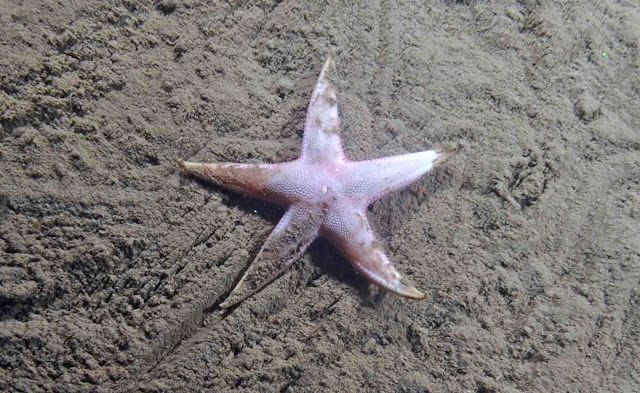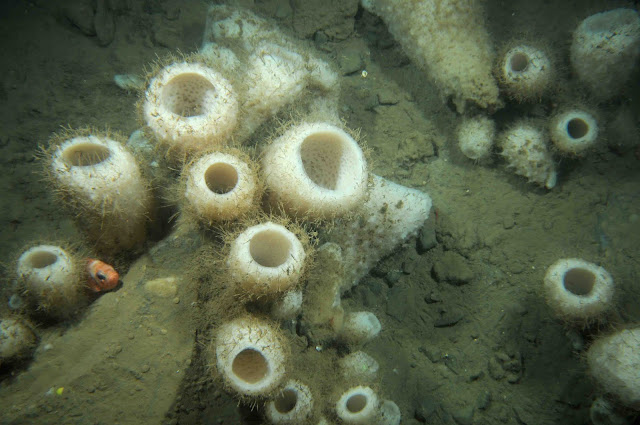I've compiled 3 video clips, 1 for each of the 3 study locations: Emerald Basin, Laurentian Channel & the Gully MPA. Each video shows the highlights at each location. Enjoy!!!
| Large sponge (Vazella pourtalesi) dominated in Emerald Basin. The world's largest known concentration of this sponge. |
| Sea pens (Anthoptilum sp.) are present in the Laurentian Channel in concentrations not yet observed anywhere else on Earth. |
| Dense aggregations of bamboo coral (Keratoisis ornata) were observed along the "Southwest Prong" of the Gully MPA. The diversity of this area was astounding. |






